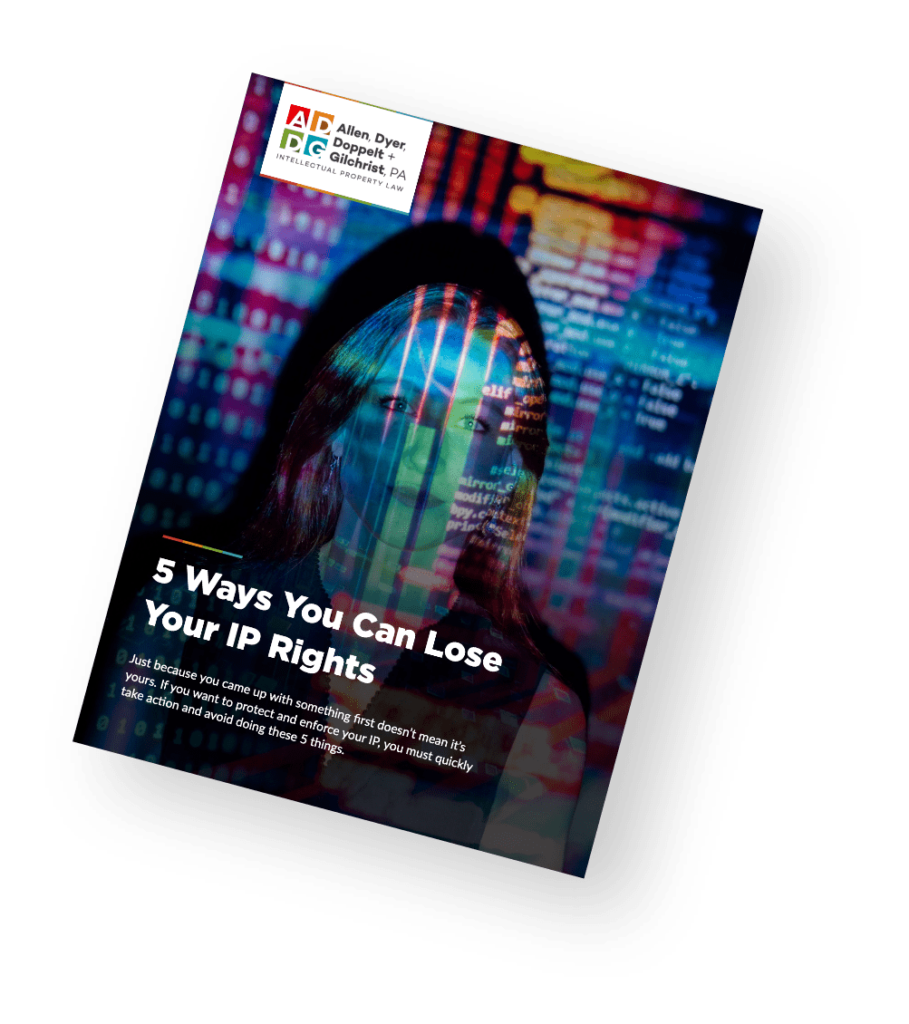Starting a company, releasing a new product, launching a website– all of these are important and exciting moments for entrepreneurs and business owners. An essential part of that process is registering your trademark for your product or services. Your trademark is the word(s) or symbol that identifies your product or brand to the public and distinguishes you from your competitors. But once you have a registered trademark for your product or service, just how long does your trademark registration last?
When thinking about the duration of a federal trademark registration, it’s important to understand just what a trademark is. When you register a trademark, you are making a public declaration that a particular symbol, design, logo, word or phrase identifies your unique goods or services. The trademark is an indication that you own that particular mark for use with particular goods or services and that you have the right to exclude others from using that trademark or a confusingly similar mark on similar goods or services.
What Is The Duration For A Registered Trademark?
The government entity which handles patents and trademarks is the United States Patent and Trademark Office (USPTO). The USPTO manages registration, renewal, and cancellations of patent & trademark applications, as well as maintaining databases of all patents and registered trademarks within the U.S. A trademark registration can last indefinitely, but only under certain conditions.
In particular, a trademark registration, once approved, must be renewed every 10 years to remain in force. There is also an initial requirement that after the first 5 years of a trademark being registered, the mark’s owner must register their intent to continue using the mark, and provide proof that the mark is indeed being continuously used in actual commerce (covered below under “Section 8 Declaration”).
Accordingly, a trademark registration has the potential to remain in force indefinitely as long as the proper renewals and declarations are timely filed with the USPTO and meet all the legal requirements for trademark maintenance and renewal. And even if the owner does allow the registration to expire, or the registration is otherwise canceled for any reason, some common law trademark rights may still apply, enabling the owner to mount a legal challenge of someone else’s use of their trademark or a similar trademark for similar goods or services within a particular geographic area.
Trademark Maintenance and Fees
Once your trademark registration is approved, you won’t have to file anything for the next five years with the USPTO. It is not until the time between the fifth and sixth year anniversary of the trademark registration’s issuance that you must file a sworn declaration (Section 8 affidavit) stating that the mark is still in use with the products or services listed on your registration. On the ten-year anniversary, you must similarly show that the trademark is still in use and has been continuously used. This may include submitting a photograph or webpage showing that the product is still available for sale or the services are still being rendered with the registered mark. In addition, you will need to pay government fees and submit a sworn declaration that the trademark is still in use.
In order to keep your rights to a trademark, you must continuously use your trademark in commerce, which means selling products with the trademark or rendering services. If you fail to do so and abandon your trademark, your rights to a trademark can be challenged before the USPTO or in court, as you may no longer be considered as having a live trademark to protect. Also, if you fail to make the required declarations and pay the required fees to the USPTO as described above, your trademark registration may be automatically canceled by the USPTO and you may lose your rights to the mark.
Government fees for filing a trademark application and maintaining the registration vary, but expect to pay $250-350 in government filing fees for the initial application and for each type of goods or services being offered under the trademark. Only one mark may be registered per application, so if you have multiple marks, you must file separate applications, each with an accompanying fee. Additional fees of $100-125 apply if you are requesting additional time to show use of a mark, or if you are showing use separately from the original application. Marks may also fall under more than one product/service class, in which case you will have to pay an additional registration fee per class, although it will still count as one trademark application.
Section 8 Declaration
As mentioned above, the Section 8 Declaration of Continued Use is a sworn affidavit provided by you to the USPTO, declaring that your trademark is still being used in commerce on the goods or services listed on your trademark registration. In addition to the Section 8 declaration, you may file a Declaration of Incontestability, or Section 15 Declaration, which gives your trademark further force of law for the next 5 years. A Declaration of Incontestability under Section 15 affirms that: “the owner claims incontestable rights in a trademark and continuous use of the trademark for five years.” Following the filing of a Section 15 declaration, the trademark becomes “incontestable” meaning the trademark registration is conclusive evidence of the validity of the mark, the ownership of the mark, and the exclusive right to use the mark.
Click the following link to read more about renewal fees and other USPTO fee schedules.
Trademark Expiration & Grace Periods
If a trademark owner fails to pay the government fees and timely provide the required renewal and maintenance documents at the initial 5-year and subsequent 10-year milestones, the trademark registration will be canceled by the USPTO. However, the USPTO does provide for a six-month grace period after the expiration date, giving the trademark owner additional time to provide the required documents and pay the government fees. However, you will be required to pay an additional fee if filing during the grace period.
Keep in mind that timely filing of a Section 15 Declaration of Incontestability at the 5-year milestone prevents challenges to ownership or challenges to the validity of the registered trademark. Challenges may still be mounted even with a Section 15 declaration being filed, but they are much more limited challenges such as the registration was acquired by fraud and is invalid or that the trademark has been abandoned. However, the challenges cannot be directed to the validity or ownership of the trademark, for example.
Requirements To Renew Your Trademark Registration
In order to renew your trademark registration, you will have to:
- File a Section 8 Declaration of Use between the 5th and 6th year from the date of the trademark registration, and also file a Section 15 Declaration of Incontestability
- File a Section 9 Renewal application between the 9th and 10th year from the date of trademark registration, along with an additional Section 8 Declaration of Use
- Pay the required fees
Following these steps will ensure that the trademark owner maintains legal protection of their mark, which may be extended every ten years indefinitely.
Protect your trademark from infringement and challenges
At ADD+G, our experienced trademark attorneys manage trademark registration portfolios for clients of all sizes, from small businesses to multinational corporations, as well as both domestic & international registration, renewal, and trademark protection. We provide trademark searches through U.S. and international trademark databases for new applications, and advise our clients on registering, protecting, and enforcing their trademark rights.
Get in touch to schedule a consultation about renewing your trademark, or any other questions you might have about trademark registration, renewal, or protection. We can help you protect your intellectual property rights!
About the Author
Matthew McKinney practices in all areas of intellectual property, representing a wide range of clients in connection with the acquisition, transfer, enforcement and defense of their intellectual property rights.
Share This





